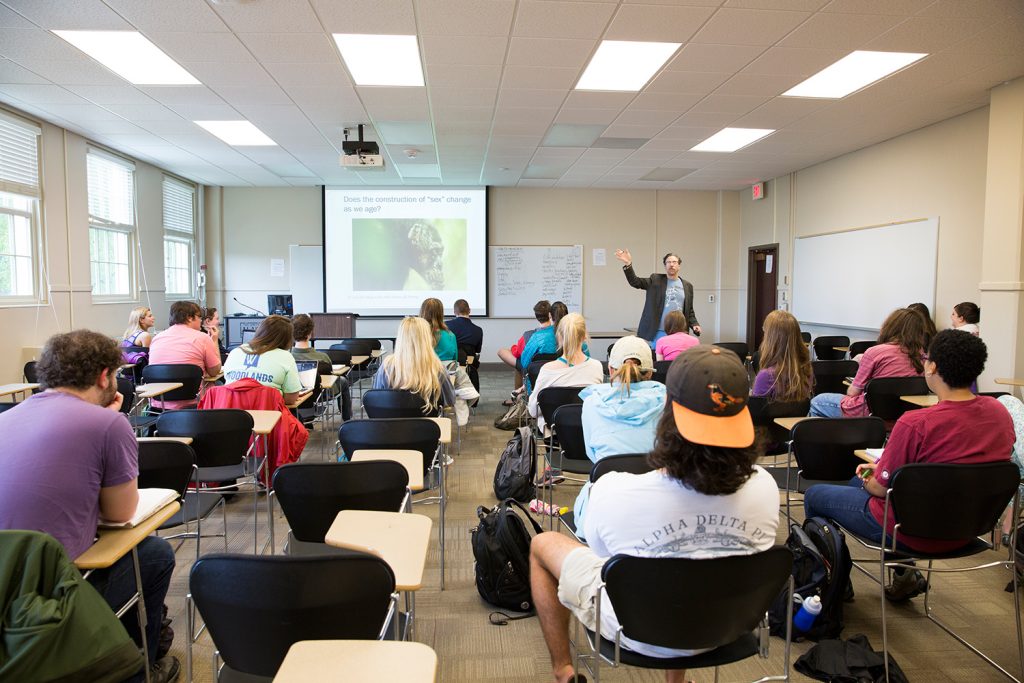If student learning depends on engagement, then it should be one of our top priorities in the classroom. But how do you foster interest, curiosity, and excitement in large courses for which the lecture is standard?
Know Students’ Names
Matthew Dolliver: I use a number of techniques to help keep students engaged. First, knowing students’ names draws them directly into the discussion/lecture portion and can be very helpful. I have also found it very useful to let students know that they will be asked to use the material at the end of class in an activity or that some material will build on what we learned today in future classes (i.e., letting them know where we’ll go next).
Ask Questions
Kim Caldwell: To keep students engaged, I embed clicker questions throughout the 50-minute lecture (about 1 question every 10 minutes),
 and I ask for students to “shout back” answers from recently discussed content. Usually, I find a rhythm with classes whereby I can get them to parrot back keywords and phrases important for key understanding of the material.
and I ask for students to “shout back” answers from recently discussed content. Usually, I find a rhythm with classes whereby I can get them to parrot back keywords and phrases important for key understanding of the material.
However, I do not attempt to prolong class discussion in my large class because most students do not stay focused when only one or two students are participating. This is why I turned to either ‘shout back’ responses of key phrases or think-pair-share exercises via clickers.
Connect Topics to Everyday Life
Natalie Dautovich: In terms of the content of classroom activities, I try to create activities that have them reflect on their own lives (or the lives of people they know). When I can get them to apply a concept to their own lives, they become much more engaged.
Work the Classroom
Natalie Dautovich: During class discussions, I try to be aware of the different areas of the classroom and make sure that I direct my questions to different sections in order to engage students from around the room. I also make sure to remember at least some of the names of students in the class and I use their names while addressing them.
Kevin Shaughnessy: I pepper my lectures with questions and primary source and image analyses, and I constantly move around the classroom making eye contact with as many students as possible.
Try a New Format
Brendan Ames: I try to partially flip my classes by posting lecture slides a day or two before each lecture. These slides give a rough outline of the lecture, as well as an indication of what should be read before class starts; most of the finer details are omitted and discussed in lecture. I think that doing so reduces the amount of verbatim note copying taken during class (students only need to fill in the details I have purposely left blank), while hopefully giving a preview what will be discussed.
Natalie Dautovich: For student engagement, I try to deliver information in novel ways. I use Prezi, draw on the SmartPad, videos, radio reports, and humor to engage students. I vary the pace of the lecture, interspersing visual aids with discussion. I also use interactive activities at varied intervals during class.